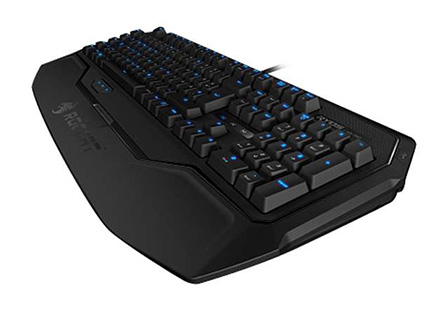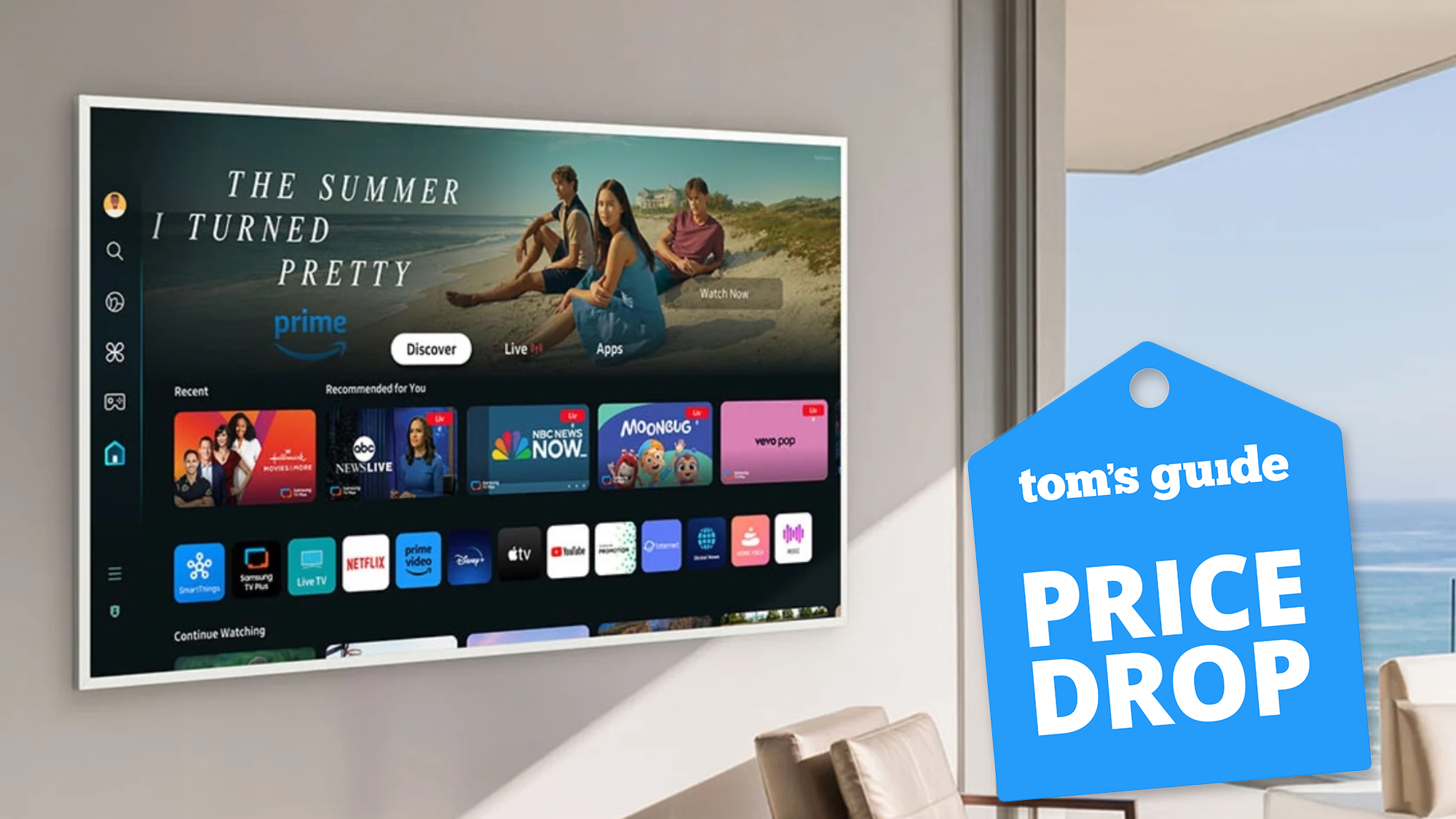Tom's Guide Verdict
The Roccat Ryos MK Pro is a good keyboard with slick lighting and versatile software, but it's a bit too expensive.
Pros
- +
Comfortable keys and wrist rest
- +
Robust software
- +
Attractive lighting
Cons
- -
Sticky typing
- -
Difficult to record macros
- -
Too expensive for what it does
Why you can trust Tom's Guide
Whether gamers simply like or love the Roccat Ryos MK Pro ($170) comes down to what they expect from a gaming keyboard. While the device is a phenomenal gaming tool, offering a robust suite of features for every genre, it can't match some of its competitors — or even basic office equipment — for everyday typing. The device is a fine choice for the price, but consumers who need a balance of productivity and leisure should look elsewhere.
Design
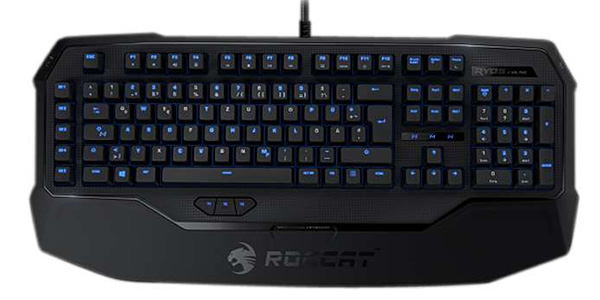
Compared to some of its gaming keyboard brethren, the Ryos MK Pro has a fairly subdued design. The body and keys are jet black with blue backlighting, while the rest of the keyboard is a textured, matted black. If the Corsair Vengeance K95 screams aggression, the Ryos MK Pro feels a bit friendlier.
MORE: Best Gaming Keyboards
The Ryos MK Pro is also a little bit bigger than it needs to be, clocking in at 20.0 x 9.2 inches, compared with the Feenix Autore's 17.3 x 5.4 inches or the Vengeance K95's 21.5 x 9.6 inches. However, whereas the Vengeance has 18 additional buttons, the Ryos MK Pro has only five, making the large size more for player comfort than function. Indeed, this keyboard is a comfortable peripheral, particularly its large wrist rest.
Keys
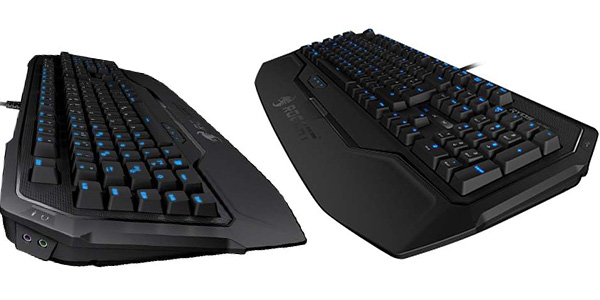
With matted surfaces and slight indentations, the keys on the Ryos MK Pro are perfectly comfortable for both typing and gaming. The peripheral makes use of Cherry MX Red switches, which require little force to actuate and make little noise. Gamers who prefer the increased resistance or hypnotic clacking of Cherry MX Brown or Blue switches will have to look elsewhere (the Corsair Vengeance K70, for example).
Although the keys were pleasant to touch, they weren't necessarily as accurate as we would have liked. In the Ten Thumbs typing test, we scored 83 words per minute with a 3 percent error rate on the Ryos MK Pro, compared with 86 words per minute with a zero percent error rate on a standard Dell keyboard. This was due to the fact that the keys are very close together, and it's exceedingly easy to hit an adjacent key by accident when jumping from button to button.
The Ryos MK Pro has five extra keys for recording macros. Five is a very reasonable number for just about any gamer, especially since the keyboard supports up to five customizable profiles. What's a little more unusual is that MK Pro replaces the caps lock button with a secondary feature shift and the right Windows button with a function key. These changes are not necessarily for the better.
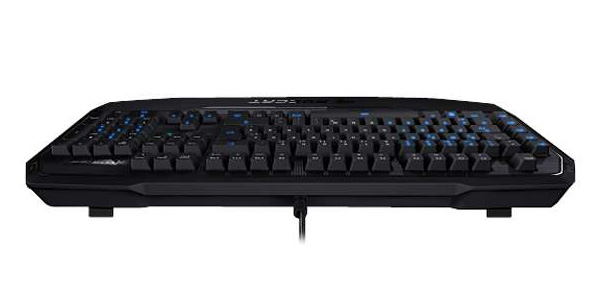
The Easy-Shift[+] button is an interesting idea in theory: hold down the button, and you can program keys with a secondary set of commands. Using this feature, you can map useful functions that you don't need all the time, like mounting a horse in "World of Warcraft" or shifting a media player to full-screen mode.
The problem is that the Ryos MK Pro already has more than enough keys to accomplish just about any productivity or in-game objective. Combined with the five macro keys, it was hard for us to think of anything terribly useful to assign to the Easy-Shift[+].
The function button also doesn't do much except kick off macro recording in conjunction with the F12 button. It's easy enough to turn the feature shift and the function back into caps lock and the right Windows key, respectively, but even having them in the first place doesn't do much.
MORE: Best Gaming Mice
Features
The Ryos MK Pro uses a unique software suite that allows players to customize the lighting and function of every key. The software has a bit of a learning curve, but we did not notice any important features missing.
Users can program and store macros across five different profiles that are stored on the keyboard itself. Combined with the five extra keys, this offers players a healthy amount of options across a wide variety of genres.
Recording macros can be a bit of a complicated process, however. Although the Ryos MK Pro does allow users to program macros on the fly, having to hold down the function button and the F12 buttons, which are nowhere near each other, makes it a pain. Having to hit function and F12 again to end the recording is also a tetchy proposition, as we found it incredibly easy to accidentally hit another key on our way there.
That said, once we recorded our macros, they worked well and made some tedious tasks — like constructing buildings in "StarCraft II" or setting up intricate ability rotations in "Star Wars: The Old Republic" much easier.
Performance
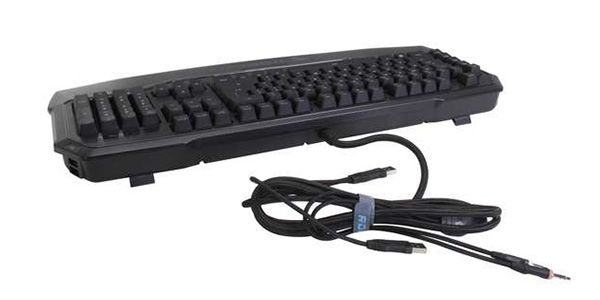
We ran the Ryos MK Pro through four games across multiple genres: "Titanfall," "StarCraft II," "Batman: Arkham City" and "Star Wars: The Old Republic." We found that the keyboard performed extremely well with each title, which was somewhat surprising given its clumsiness with typing.
The ability to program macros was more helpful in "StarCraft II" and "The Old Republic" than it was in the other two titles, but even just running from point to point on a map in a giant mech suit or grappling around Gotham City worked well for us. The keys were responsive, and the keyboard's ample wrist rest kept us comfortable and alert the whole time we were playing.
The Ryos MK Pro is a USB keyboard, andUSB keyboards tend to have less rollover capability than their PS/2 counterparts. When we tested the keyboard's rollover, we found that 10 keys could be pressed at once without any key presses failing.
Bottom Line
The Ryos MK Pro is not bad by any means, but it has a few notable drawbacks and is too expensive for what it offers. We like the comfy keys and wrist rest, slick lighting and comprehensive software, but the everyday typing experience isn't the best. While also pricey, the Corsair Vengeance K95 ($150) delivers more responsive keys, and it's easier to record macros. It's also a better choice for MMO play.
Specs:
Actuation: 60g
Key Travel: 4mm
N-Key Rollover: >10
Size: 20.0 x 9.2 inches
Weight: 3.52 lbs
Follow Marshall Honorof @marshallhonorofand on Google+. Follow us @tomsguide, on Facebook and on Google+.
Marshall Honorof is a senior editor for Tom's Guide, overseeing the site's coverage of gaming hardware and software. He comes from a science writing background, having studied paleomammalogy, biological anthropology, and the history of science and technology. After hours, you can find him practicing taekwondo or doing deep dives on classic sci-fi.
-
grandpaseth85 Your statement about the keys only coming in Cherry MX Red is false. You can also get this keyboard in Cherry MX Brown, Blue, and Black. I'm typing this now on a Ryos MK Pro with Brown switches, and it's fantastic.Reply -
Gee Bee same, red is the std. More expensive than others, not any more. I paid the same for my Razor ult. I was so impressed by this KB i brought a kone pure to go with it. Maybe 'talk' was not out when you reviewed but it is now and is a huge plus when interacting between KB and mouse. Per key lighting is not just a look good either, in gaming it makes a big difference. You really ought to review this again given the new additional SW and price point.Reply
